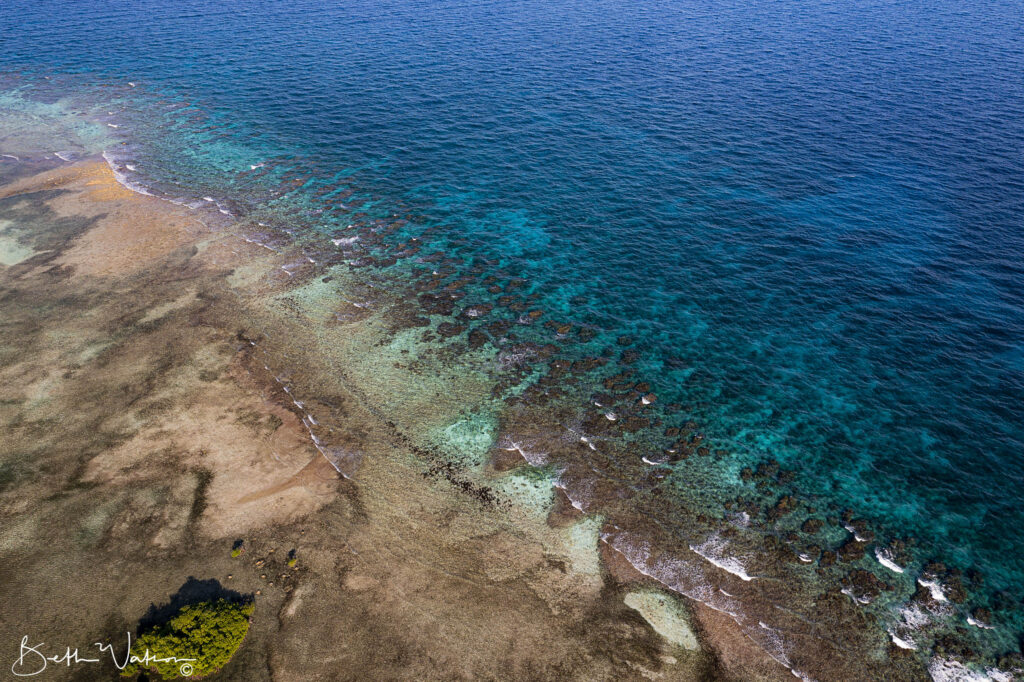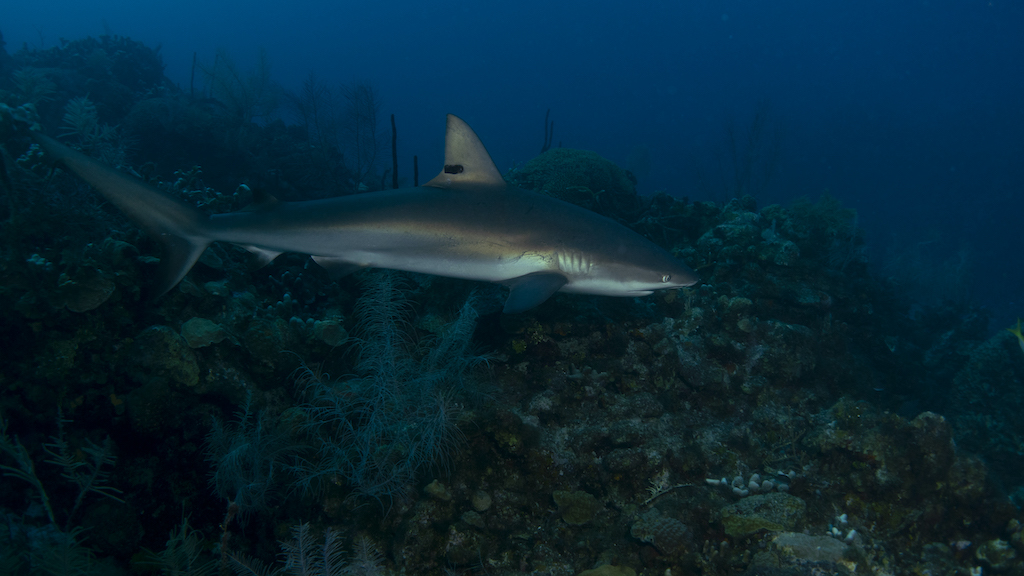Get involved
100% of your donation will go to support the work of the Turneffe Atoll Sustainability Association
Discover the Ecosystems within Belize’s Largest and Most Significant Marine Reserve
Turneffe Atoll is one of the most pristine areas within the MesoAmerican Reef System and its diverse marine and terrestrial ecosystems are considered to be globally outstanding. Surrounded by deep ocean, most coastal and marine ecosystems are well-represented with seven broad ecosystems and thirteen fine ecosystem identified and mapped.
Turneffe is an excellent example of the high degree of ecosystem interconnectivity that is key for healthy, productive reef systems with reef, seagrass and mangroves all growing in close proximity.
Coral reefs are the rainforests of the tropical seas filled with vibrant life in a multitude of shapes, sizes and colors. The beauty and complexity of this ecosystem draws tourists to Belize which is important to Belize’s national economy. The reef supports fishermen that use Turneffe as an important fishing area.
Turneffe is considered one of the best developed coral atolls in the Caribbean. It is surrounded by a fringe reef that is well-developed on the east side, with a well-formed fore reef, reef crest and prominent back reef flats. The large, sheltered, relatively shallow inner lagoon supports patch reefs, cayes and extensive mangrove, while beyond the reef crest, the outer slopes of the Atoll fall steeply away into deep water.
Both hard and soft corals are well represented with at least forty-eight of the sixty species of hard corals known to be in Belize identified at Turneffe. Ten of these are considered critically endangered, endangered or vulnerable on the global scale including the reef building staghorn (Acropora cervicornis) and elkhorn (Acropora palmata) corals. The most abundant species encountered are Sea Ginger (Millepora alcicornis), followed by the Yellow Porites (Porites astreoides), Lettuce Coral (Agaricia tenuifolia) and the endangered Boulder Starr Coral (Montastrea annularis).
Even though the reef at Turneffe, where land based impacts are minimal and water clarity is high, is one of the healthier reefs in the Caribbean, the percentage of live coral at Turneffe has declined significantly over the last twenty years. This is a world-wide trend that has been attributed to a multitude of reasons including climate change, over fishing, pollution and siltation from dredging. Since 1998, when Belize experienced a major coral bleaching episode, bleaching events have been recorded at Turneffe Atoll with increasing frequency, likely accentuated by increased acidification resulting from higher CO2 levels in the seas.
Behind the reef crest along the eastern extent of the Atoll, extensive, firm-bottom back reef flats stretch from the north end of Northern Caye nearly to the southernmost tip of the atoll. Turneffe’s back reef flats are key nursery areas for queen conch and are highly regarded by sports fishermen as one of the best places world wide to fly fish for bonefish and permit.

The seagrass beds of Turneffe are critical for the maintenance of ecosystem connectivity providing the link between the reef and the mangroves. These seagrass meadows stretch from the reef crest across the back reef and through the Central and Northern Lagoons, providing stabilization to the sediments of the sea bed and helping to maintain some of the most productive lobster grounds in Belize. While composed primarily of Turtle Grass (Thalassia testudinum), the finer Manatee Grass (Halodule wrightii) and Shoal Grass (Syringodium filiforme) are also common. These seagrass beds support a resident population of west Indian manatees.
Many juvenile reef fish and invertebrates use the seagrass as an intermediate habitat including parrotfish, which are critical to the maintenance of a healthy reef. Queen conch also rely on seagrass by grazing on their leaf blades. Along with lobster, these large mollusks form the basis of Belize’s fishing industry.
Turneffe Atoll sits on a ridge surrounded on all sides by a deep water with depths of up to 900 feet on the West side between Turneffe and the barrier reef, and 3300 feet on the East side between the Turneffe and Lighthouse Atoll. The deep waters along the eastern side of the atoll provide the currents and conditions required for spawning aggregations.
Here fish such as snapper and grouper gather in the thousands during the full moon. These sites also attract other species known to travel up and down in the deep waters parallel to the reef, including whale sharks, pilot and humpbacked whales and orcas.

Mangroves provide key habitat requirements including shelter, food and nursery areas for a variety of marine species including the commercially important spiny lobster. Extensive mangrove stands cover 62% of the Central Lagoon at Turneffe. The almost unique topography of the Atoll has enabled the deep peaty soils to develop in shallow basins between the sea and the mixed mangrove scrub on its leeward side providing ideal conditions for mangroves to thrive.
Red mangroves (Rhizophora mangle) dominate with their arched roots reaching out into the clear waters providing protection for juvenile fish such as snapper and grouper, and breaking the force of rough waters during storm events to prevent the loss of cayes from erosion.
Black mangrove (Avicennia germinans) and white mangrove (Laguncalaria racemosa) stands are also well represented. They are set slightly back from the waters edge behind the red mangroves. Generally taller, these trees are well adapted to the saline soils and provide structure for nesting and roosting birds including herons, egrets, and osprey. Mangrove thickets also provide habitat for a multitude of smaller animals.
Littoral forest, found only on the cayes and the coastal strand of the mainland, is Belize’s most threatened ecosystem and the most threatened coastal habitat worldwide. This is due largely to coastal development.
A mix of hardy trees and shrubs, the vegetation typically includes both ‘caye forest’ and ‘beach thicket’, with herbaceous ground-cover plants and vines on the upper beach transitioning into woody shrubs with the relatively open canopy of salt-tolerant trees. These forests and scrubs bear the brunt of the storm winds, often showing stunted growth forms in the most exposed locations.
Littoral forest is not only important for resident species, but also for migratory birds that pass through Belize in the Fall and Spring. Belize is a critical transition point for birds crossing the Caribbean Sea, allowing them to rest, feed and refuel before flying on.
The wreck of the Wit off Turneffe Atoll offers some of the best wreck diving in Belize.
Immerse yourself in the fun, educational adventure of Belize’s first snorkel trail.
Try for a Grand Slam when you flyfish in the shallow coastal waters of Turneffe Atoll.
Turneffe Atoll has retained its biodiversity and offers the best scuba diving in Belize.
Walk back in time as you see the mangrove forests of Calabash Caye.
100% of your donation will go to support the work of the Turneffe Atoll Sustainability Association